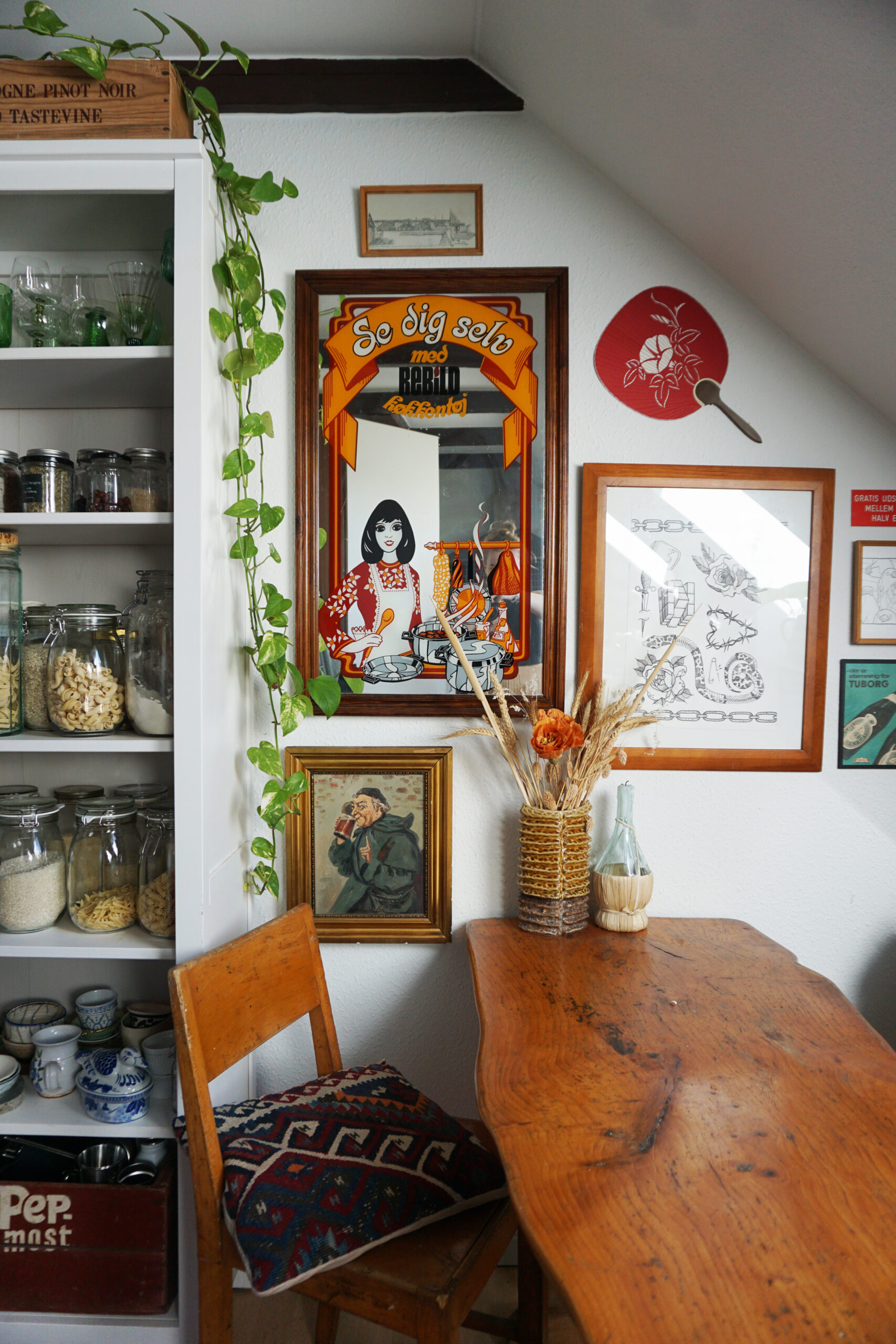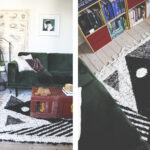There are several ways of getting pre-loved furniture:
So it’s about finding the methods that work the best for you, the ways available, and what is the most cost-effective, and probably a combination of several methods. There are thrift shops, vintage/antique shops, Facebook Marketplace, private buy-nothing/giving away groups, estate sales, flea markets, friend-swaps, and second hand platforms.
Also check out: A WEEK OF (imperfect) ZERO WASTE // everyday sustainability vlog

Don’t look for something too specific:
Now this depends on what kind of person you are (some people like to be super organised, but I don’t roll this way, and here is why), I find that you have more success finding the diamond in the rough if you keep an open mind. If you walk in with a vision of something too specific, you might not notice the potential around you.
Also check out: The Rise of Vinted // the second hand mothership is up to no good

See potential:
Buying second-hand furniture isn’t like taking a stroll through Ikea, you need to use your imagination because the potential and visual of the furniture isn’t spoon food to us in the same way. This goes hand in hand with not being too specific about your wishes for what you need – it can also mean that some light DIY can completely elevate a piece of furniture. Striping it of paint, giving it a fresh coat, removing drawers, or upholstering can bring out its unique potential, but we need to use our imagination to find those special things.
Be prepared:
Bring measuring tape, and potentially a rough idea of how much space you have a home. I like to do some quick measurements before I go thrifting, just to make sure I don’t buy something that won’t fit. This is especially frustrating if you live in a small flat where the space is limited.
Make a day of it:
I always recommend visiting thrift stores often, this is mostly when you’re looking for smaller things lie home décor, and clothes etc., when it comes to furniture I like to make a day of it. Bring a friend, or a family member and hit as many thrift stores as possible, I have rented a car for half a day a couple of times and made a whole trip of it. Because sometimes, the best thrift stores for furniture are located outside the city.
Also check out: REVERSE HAUL // I’ll wear the same outfits when I am 60

If you don’t have a car:
It’s definitely a lot easier to thrift bigger pieces when you have your own car, but doing it without one is also possible. I don’t have a car and I managed (with a little help from my friends and family from time to time). You can ask someone you know with a car to join you, you can rent a car for a few hours, or you can ask the seller/thrift store if delivery is possible. When I have bought furniture on Facebook Marketplace, I always ask if they can help me with transporting the pieces, of course for an added fee. I have also taken the bus, or a taxi with big pieces of furniture. But you need a transportation plan, luckily there are a few options to choose from.
Practise the quality eye:
This might be the most important tip, at least from an aesthetic point of view, learning how to spot good quality materials in a time where half the stuff is poorly made laminate Ikea fast furniture can be a real challenge, nonetheless, quality items will last you longer than cheap knock materials. One example of this is learning how to be able to spot actual old, worn, quality materials like antique wood and leather from products that are designed to simply look old. Guess which one will last the longest…
Also check out: let’s go to the biggest thrift store in the country // second hand home decor

Know when to pass:
Some diamonds are meant to be left in the rough – meaning that while some furniture has potential it’s important to know what you’ll realistically get done, and what will end up being an unfinished project for years to come. I haven’t always known when to pass, meaning that I collected a lot of clutter where none of the pieces felt right for me – but they had potential. Perhaps you see something of a certain trendy style and feel inclined to buy it while ignoring that it’s actually really poor quality. Knowing when to pass will take your thrifted home from looking like a hoarder’s den to feeling intentional and well-curated.
Prevent infestations of bedbugs and other pests:
First of all, use common sense, if bedbugs are prevalent where you live, avoid dumpster diving furniture, or pick these up from the street that look like it was discarded there, you can also avoid furniture with fabric details, cushions etc, overall, you have to think about how great the risk is where you live, and act accordingly. It’s very uncommon in Denmark, I have seen and heard about the issue while abroad but rarely encountered it here, so I am not as careful as I would encourage others to be, depending on the situation. If bedbugs are high-risk stick to hard, simple, furniture, and inspect everything you buy carefully.
Know when it’s time to drive a bargain, and when it isn’t:
There is etiquette, and I’ll always encourage both buyers and sellers to be decent people (you would think that that’s not necessary to say, but alas). This means no bargaining in charity shops, the money goes to charity for goodness sake. If there is damage done to the item, or the price seems completely off compared to the condition you can ask if the price is set right, but you definitely shouldn’t try to bargain with the volunteer charity shop personnel. If you’re buying at estate sales or flea markets, it’s all fair game, bargain all you want. The same goes for FB market place HOWEVER…. you can’t settle on price online and then show you expecting to re-negotiate. I was selling a bed once, for dirt cheap, since I just needed to get rid of it, and the buyer arrived with only half the money we agreed on… they knew I just needed to get rid of it, so they knew I would accept, but that’s just a shitty move.
Also check out: IS IKEA ACTUALLY SUSTAINABLE ? // the impact of fast furniture





